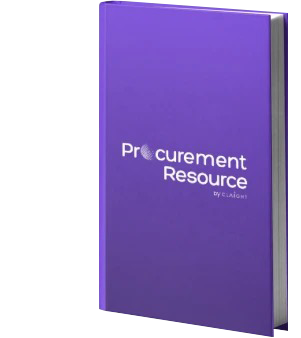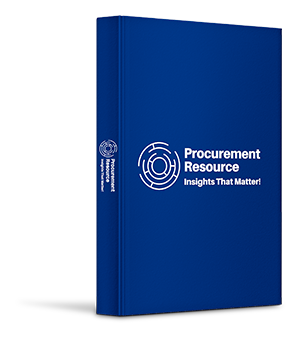Reports

Global Fracking Proppants Market: Country Overview; Recent Events; Value Chain Analysis; Production Process; Cost Structure; Market Dynamics: Drivers & Constraints, Innovations & Trends, SWOT Analysis, Porter’s Five Forces; Industry Best Practices: Sourcing Strategy, Procurement Model, Contract Structure, Key Factors Influencing the Quotation; Key Supplier Analysis, 2024-2032
Fracking Proppants Industry Report by Regional Category Spend, Price Analysis, Key Demand, and Price Indicators, and Best Buying Practices
The global Fracking Proppants market reached a value of about USD 7.14 billion in 2021. The industry is projected to grow at a CAGR of around 6% in the forecast period of 2022-2027 to reach a value of about USD 10.12 billion by 2027.
The global Fracking Proppants industry report gives a comprehensive analysis of the industry, including key segments, trends, drivers, restraints, the competitive landscape, and other essential market aspects. The demand for the product due to its use in exploration activities is driving the market growth. The United States is the highest category spender by region, driving the demand for the Fracking Proppants industry.
Industry Definition and Segmentation
A proppant, also known as ceramic proppants, is a sand-like solid substance used to keep an induced hydraulic fracture open during or after fracturing. It is ordinary sand, treated sand, or artificial ceramic materials. It is among the most crucial oilfield innovations and is utilised to frac shale gas, tight oil, and coal bed methane, among other oil and gas resources. The Fracking Proppants industry report comprises segments by type (frac sand, ceramic proppants, and resin-coated) and region (North America, Europe, Asia Pacific, the Middle East, and Africa, and Latin America).
The United States is Driving the Growth of the Industry
The United States holds the largest share in the industry as it is one of the world's leaders in exploring unconventional crude oil deposits and the use of hydraulic fracturing to extract them. The need for proppants has been increasing as the country's hydraulic fracturing applications, particularly shale gas and tight oil, have grown. Furthermore, as the number of horizontal wells in North America grows, the need for proppants per well grows, likely to boost the market.
The rise in exploration activities is driving the market; the demand for proppants has risen as crude oil prices. Because of its extensive use in oil and natural gas wells and its economic advantage over other proppants, raw frac sand is the most commonly employed. It accounts for a significant industry share due to its efficiency, low cost, and availability. Superior properties of high-quality frac sand, such as high-purity silica sand, a spherical form that allows it to be transported in hydraulic fracturing fluid with little turbulence, and durability to withstand crushing pressures of closing cracks, boost its use proppants, thus resulting in the market's expansion.
However, the stringent Government rules aimed at decreasing hydraulic fracturing because of its harmful environmental effect and groundwater pollution might impact the market negatively.
Best Procurement Practices
The global Fracking Proppants industry report by Procurement Resource gives an in-depth analysis of the best buying practices followed by major global Fracking Proppants regions, such as engagement models, contract terms, and buyer and supplier negotiation levers, among others.
Category Management Studies
The abrupt shock of propelling a liquid combination of proppant, chemicals, and water into a well causes cracks in the rock. If nothing is done to keep these fissures open, they will shut, limiting the number of hydrocarbons that may escape. They are crush-resistant and help keep fractures open for as long as possible, increasing well production.
Advancements in the Sector, Further Driving the Fracking Proppants Market
The industry is aided by advancements in fracturing technology and increased shale gas production operations. Furthermore, Ceramic proppants are expected to rise in popularity since they are believed to be more environmentally friendly. In addition, new fracking techniques, such as horizontal multistage fracturing, are also being introduced by manufacturers furthering the market. Additionally, the development of eco-friendly non-phenolic resin-coated proppants and improvements in the hydraulic fracturing process in terms of increasing fracture flow capacity paired with increased research and development (R&D) to produce lightweight proppant variations is likely to impact the market positively.
The regional markets for the industry can be divided into North America, Latin America, Europe, the Middle East and Africa, and the Asia Pacific.
Key Industry Players Mentioned in the Fracking Proppants Industry Report
- Badger Mining Corporation
- CARBO Ceramics
- Hi-Crush Partners LP
- US Silica Holdings, Inc.
- Yixing Orient Co Ltd.
Market Landscape
The worldwide proppants market is fragmented, with no single company controlling a significant portion of the industry. Proppant providers may not be able to negotiate better terms with reduced but steady oil pricing. Service firms' high-volume purchases and long-term ties with suppliers will limit an E&P company's ability to buy proppants directly. Due to growing application growth in the Asia Pacific, the bulk of businesses has boosted manufacturing capacity.
Key Initiatives by Companies
- Badger Mining Corp. (BMC) announced a new relationship with TranSand Inc. in Berlin, WI, and Camrose, AB. This unique cooperation in Fort St John will significantly boost the region's frac sand trans-loading capabilities.
- December 3, 2020 — Hi-Crush Inc. announced that its Board of Directors had named a new leadership team to lead the company into its next expansion phase. Dirk Hallen has been named CEO, Stephen White has been designated COO, and William Barker has been appointed General Counsel and Chief Commercial Officer. All the appointments took effect on November 30, 2020.
1. Executive Summary
2. Fracking Proppants Market Snapshot
2.1. Fracking Proppants Market Outlook
2.2. Fracking Proppants Industry Analysis by Type
2.2.1. Frac Sand
2.2.2. Ceramic proppants
2.2.3. Resin Coated
2.3. Country Overview
2.3.1. North America
2.3.2. APAC
2.3.3. Europe
2.3.4. Latin America
2.3.5. Middle East & Africa
3. Impact of Recent Events
4. Fracking Proppants Value Chain Analysis
5. Fracking Proppants Production Process
6. Trade Analysis
7. Major Risk Factors in Sourcing
8. Fracking Proppants Cost Structure
9. Fracking Proppants Price Analysis
10. Key Demand Indicator Analysis
11. Key Price Indicator Analysis
12. Fracking Proppants Market Dynamics
12.1. Drivers & Constraints
12.2. Industry Events
12.3. Innovations & Trends
12.4. Swot Analysis
12.5. Porter’s Five Forces
12.5.1. Buyer Power
12.5.2. Supplier Power
12.5.3. Threat of New Entrants
12.5.4. Threat of Substitutes
12.5.5. Industry Rivalry
13. Industry Best Practices
13.1. Sourcing Strategy
13.2. Procurement Model
13.3. Contract Structure
13.4. Negotiation Levers
13.5. Pricing Model
13.6. Key Factors Influencing the Quotation
14. Key Supplier Analysis
14.1. Badger Mining Corporation
14.2. CARBO Ceramics Limited
14.3. Hi Crush Inc
14.4. US Silica Holdings,Inc.
14.5. Yixing Orient Co Ltd.
The global Fracking Proppants market size was valued at USD 7.14 billion in 2021.
As per the product type provided, the Frac Sand segment is anticipated to lead the market between the period 2021 – 2027.
The significant demand for the product in the oil and gas sector is one of the essential drivers of the Fracking Proppants market growth.
Badger Mining Corporation, CARBO Ceramics, Hi-Crush Partners LP, US Silica Holdings, Inc., and Yixing Orient Co Ltd. are some of the prominent players in the market.
The United States region of the Fracking Proppants industry holds a significant share in the market.
The global Fracking Proppants market attained a value of USD 7.14 billion in 2021, driven by the rise in exploration activities. With the growing advancements in fracturing technology and increased shale gas production operations paired with increased research and development (R&D) to produce lightweight proppant variations, the market is expected to witness further growth in 2022-2027 CAGR of 6%. The market is projected to reach USD 10.12 billion by 2027. Some of the leading players in the industry are Badger Mining Corporation, CARBO Ceramics, Hi-Crush Partners LP, US Silica Holdings, Inc., and Yixing Orient Co Ltd.
Procurement Resources' detailed research approach explores deep into the industry, encompassing the macro and micro aspects of the industry. Its team of experts uses cutting-edge analytical tools and their expertise, thus, delivering its customers with market insights that are accurate and actionable and help them remain ahead of their competition.
Compare & Choose the Right Report Version for You
RIGHT PEOPLE
At Procurement Resource our analysts are selected after they are assessed thoroughly on having required qualities so that they can work effectively and productively and are able to execute projects based on the expectations shared by our clients. Our team is hence, technically exceptional, strategic, pragmatic, well experienced and competent.
RIGHT METHODOLOGY
We understand the cruciality of high-quality assessments that are important for our clients to take timely decisions and plan strategically. We have been continuously upgrading our tools and resources over the past years to become useful partners for our clientele. Our research methods are supported by most recent technology, our trusted and verified databases that are modified as per the needs help us serve our clients effectively every time and puts them ahead of their competitors.
RIGHT PRICE
Our team provides a detailed, high quality and deeply researched evaluations in competitive prices, that are unmatchable, and demonstrates our understanding of our client’s resource composition. These reports support our clientele make important procurement and supply chains choices that further helps them to place themselves ahead of their counterparts. We also offer attractive discounts or rebates on our forth coming reports.
RIGHT SUPPORT
Our vision is to enable our clients with superior quality market assessment and actionable evaluations to assist them with taking timely and right decisions. We are always ready to deliver our clients with maximum results by delivering them with customised suggestions to meet their exact needs within the specified timeline and help them understand the market dynamics in a better way.
Email Delivery Price: $ 899.00
The global nutmeg market reached a value of about 134 thousand tonnes in 2021. The industry is further expected to grow at a CAGR of about 4.5% in the forecast period of 2022-2027 to reach a value of around 167 thousand tonnes by 2027.
Read MoreEmail Delivery Price: $ 899.00
The global Artificial Intelligence Market reached a value of about USD 192 Billion in 2021. The industry is projected to grow at a CAGR of around 23% in the forecast period of 2022-2027 to reach a value of about USD 664.86 Billion by 2027.
Read MoreEmail Delivery Price: $ 899.00
The global HEOR market reached a value of about USD 1364.3 million in 2021. The industry is further expected to grow at a CAGR of about 12.81% in the forecast period of 2022-2027 to reach a value of around USD 2779.2 million by 2027.
Read More
